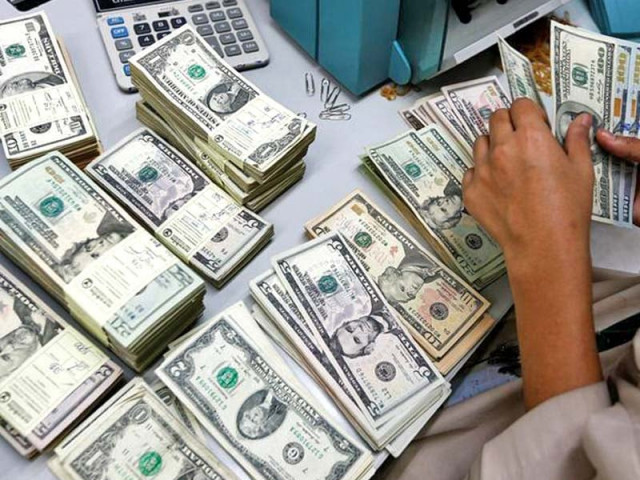Bilateral project financing dries up
Pakistan receives foreign loans worth $3.2b during July-October

Pakistan has received $3.2 billion in foreign loans during the first four months of the current fiscal year, as project lending from bilateral sources, including China, has almost dried up.
There were almost no disbursements of loans from Japan, Saudi Arabia and China, except for the unplanned $1 billion that Pakistan secured from Beijing as Safe deposits deal to repay an equal amount of the Saudi debt four months ahead of the schedule.
The breakdown of the $3.2 billion worth of disbursements of the foreign loans during July-October period of fiscal year 2020-21 highlights the government’s economic priorities and the foreign policy challenges that it faces.
The $3.2 billion disbursements were higher by $850 million or 36% when compared with the loans received during the same period of the last fiscal year, according to the figures released by Ministry of Economic Affairs.
However, after excluding $1 billion Chinese Safe deposits that the government acquired to prematurely retire Saudi debt in July, the disbursements were negative by 6.4%, according to the statistics compiled by the Ministry of Economic Affairs.
Pakistan needs foreign loans to repay its debts, as successive governments have been badly struggling to increase the exports that remained negative 10.3% during July-October period of this fiscal year. The foreign remittances, another critical non-debt creating inflow, have started picking up pace since July, which is providing relief to the government.
Pakistan may also have to make bullet debt repayments of $4 billion to Saudi Arabia and the United Arab Emirates (UAE) from December to March of this ongoing fiscal year.
Out of the $3.2 billion, project financing - the money received to create assets - amounted to less than $400 million or nearly 13% of the borrowing, according to the ministry. This money came mainly from the multilateral creditors.
The bilateral creditors gave $39 million loans during July-October period, as compared to $311 million in the same period of the last fiscal year.
A key reason behind shrinking lending by the countries was no new project financing by China and Japan, said a senior official of the Ministry of Economic Affairs. Pakistan has not signed any new project financing agreement with China after 2015 and the already signed projects of the China-Pakistan Economic Corridor (CPEC) have either been completed or are near completion, he added.
China did not disburse any amount in project financing during the current fiscal year as against $295 million in the same period of the last fiscal year.
The lending by Japan, which used to be in the range of $500 million annually, has also dried up amid a strategic shift by both Pakistan and Japan. The loans from Japan during July-October period amounted to just $1 million.
Saudi Arabia that had extended nearly $210 million in loans during July-October period of the last fiscal year did not disburse any amount this time.
Pakistan received $33 million from France in loans in the ongoing fiscal year.
The $3.2 billion borrowings were equal to 26% of the annual budget estimate of $12.2 billion for fiscal year 2020-21.
Pakistan received about $2.7 billion on account of budget financing and balance of payments support, which the country would be paying back after taking new loans as no revenue-generating assets were created by using these loans.
The commercial loans stood at $566 million in this fiscal year as against $785 million in the same period of the last fiscal year. As a policy, the government is now gradually moving away from the commercial lending that is considered riskier and short term in nature.
The commercial lending had phenomenally increased during the Pakistan Muslim League-Nawaz (PML-N) time, which caused massive surge in debt repayments during the early years of the Pakistan Tehreek-e-Insaf (PTI) government.
The multilateral development partners disbursed $1.6 billion in foreign economic assistance in the current fiscal year as against $1.1 billion in the same period of the last fiscal year. There was 53% increase in multilateral lending but this money largely came for budget financing.
Amongst the multilateral development partners, the Asian Development Bank (ADB) provided $665 million and the World Bank disbursed $626 million.
The Islamic Development Bank disbursed only $30 million in this fiscal year as against $303 million in the same period of the last fiscal year. But there was an increase in disbursement by the China-dominated Asian Infrastructure Investment Bank that extended $250 million loan.
Meanwhile, Pakistan and the World Bank on Wednesday signed a $19.9 million grant agreement for “Covid-19 Response, Recovery and Resilience in Education Project.”
The agreement was signed on the day the news appeared that the World Bank has suspended $200 million project due to lack of progress to contain coronavirus contagion.
Published in The Express Tribune, November 26th, 2020.
Like Business on Facebook, follow @TribuneBiz on Twitter to stay informed and join in the conversation.


















COMMENTS
Comments are moderated and generally will be posted if they are on-topic and not abusive.
For more information, please see our Comments FAQ